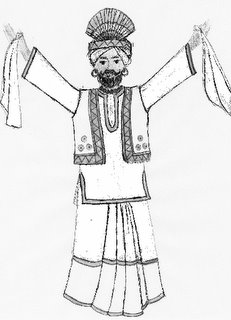Dance, music, temples and Oriyas

Sanket Upadhyay
Knowing that conditions are deplorable but still being proud of the motherland is something most of us Indians are expert at. The expatriates from Orissa are no exceptions. Not many have settled in Rajasthan but those who have are, quite obviously and like others, proud of their home state. The state ails from improper sanitation, poverty, illiteracy and the presence of many backward tribes. But when people of the land of temples, Orissa, come to talk about their own state, they are proud about the rich history they are armed with.
Even in a parched state like Jaipur, you would hear instances of being washed by the blue waters of the Bay of Bengal – Puri beaches that is.
The state is sandwiched between the sea, the state of Jharkhand from its north, West Bengal in the North East, Andhra Pradesh in the south and Madhya Pradesh towards its west – a clear meaning that there is a cross-cultural existence. So are the people, even though they have crossed the physical boundaries.
Many in Jaipur are still in the habit of saying “taka” in place of Rupee while purchasing something from shops. “Mostly people from Mayurbhanj and Baleshwar refer to a Rupee as taka. It is the Bengal influence,” Ratan Misra, an expatriate student from Orissa, studying in a city institute, says. For others, there is an Oriya incarnation – “tanka” for a Rupee.
Some are troubled with Jaipur and its people. “Coming from Bhubhaneshwar, one feels like hell in Jaipur. The city back home is way more planned and organised than this place,” maintains Misra.
Here’s a nasty one on Rajasthan. The expats feel that thousands of temples including Konark, Jagannath Puri and Lingraj temple, a Nandan Kanan sanctuary, Chilka lake, Similipal National Park and a long coastline come as a natural attraction to thousands of tourists. “The government in Rajasthan goes out of its way to promote its tourism industry. For Orissa, its culture, tradition, tourist spots and dances have a magnetic charm over people,” an Oriya expat Pradosh Choudhary, who works with a newspaper for 4 years, says.
He adds that Rajasthan may have to struggle a little to attract industries, but the tribal state, considered backward is already on the fast lane of industrial development. “Orissa has vast mineral, marine and forest resources for setting up large, medium and small scale industries. An industrial boom, especially in the steel sector shall take place in the next five years,” he says.







